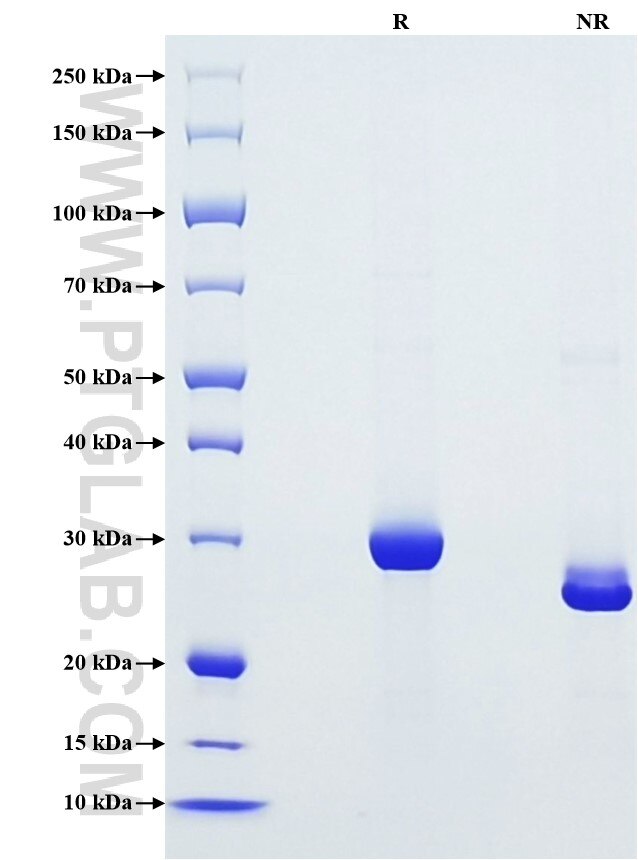Recombinant Human IGFBP-1 protein (His Tag)
Species
Human
Purity
>90 %, SDS-PAGE
Tag
His Tag
Activity
not tested
Cat no : Eg0951
Validation Data Gallery
Product Information
| Purity | >90 %, SDS-PAGE |
| Endotoxin | <0.1 EU/μg protein, LAL method |
| Activity |
Not tested |
| Expression | HEK293-derived Human IGFBP-1 protein Ala26-Asn259 (Accession# P08833) with a His tag at the C-terminus. |
| GeneID | 3484 |
| Accession | P08833 |
| PredictedSize | 26.3 kDa |
| SDS-PAGE | 28-32 kDa, reducing (R) conditions |
| Formulation | Lyophilized from 0.22 μm filtered solution in PBS, pH 7.4. Normally 5% trehalose and 5% mannitol are added as protectants before lyophilization. |
| Reconstitution | Briefly centrifuge the tube before opening. Reconstitute at 0.1-0.5 mg/mL in sterile water. |
| Storage Conditions |
It is recommended that the protein be aliquoted for optimal storage. Avoid repeated freeze-thaw cycles.
|
| Shipping | The product is shipped at ambient temperature. Upon receipt, store it immediately at the recommended temperature. |
Background
IGFBP-1 (Insulin-like growth factor binding protein-1) belongs to the insulin-like growth factor (IGF) system, which plays an indispensable role in normal growth and development, and in the pathophysiology of various tumors. IGFBP-1 has been shown to be associated with the risk of various tumors, and has a vital function in regulating tumor behaviors such as proliferation, migration, invasion and adhesion through different molecular mechanisms. In addition, As a secreted protein, IGFBP-1 is the most predominant IGFBP in amniotic fluid and expressed steadily and normally in the liver, endometrium and placenta among them. But insulin that can inhibit IGFBP-1 expression through the insulin receptor and growth hormone can regulate IGFBP-1 expression.
References:
1. Yi-Wei Lin. et al. ( 2021). Am J Transl Res. 13(3):813-832. 2. Linn Fagerberg. et al. (2014). Mol Cell Proteomics. 13(2):397-406. 3.T G Unterman. et al. (1991). Endocrinology.128(6):2693-2701.

